- All events
- Academic Calendar
- Institute Holidays
- Events Calendar
Loading...
- Nov 1810:00 AMInk, Stone, and Silver Light: A Century of Cultural Heritage Preservation in AleppoOn view October 1 -- December 11, 2025This exhibition draws on archival materials from the Aga Khan Documentation Center at MIT (AKDC) to explore a century of cultural heritage preservation in Aleppo, Syria. It takes as its point of departure the work of Kamil al-Ghazzi (1853–1933), the pioneering Aleppine historian whose influential three-volume chronicle, Nahr al-Dhahab fī Tārīkh Ḥalab (The River of Gold in the History of Aleppo), was published between 1924 and 1926.Ink, Stone, and Silver Light presents three modes of documentation—manuscript, built form, and photography—through which Aleppo’s urban memory has been recorded and preserved. Featuring figures such as Michel Écochard and Yasser Tabbaa alongside al-Ghazzi, the exhibition traces overlapping efforts to capture the spirit of a city shaped by commerce, craft, and coexistence. At a time when Syria again confronts upheaval and displacement, these archival fragments offer models for preserving the past while envisioning futures rooted in dignity, knowledge, and place.
- Nov 1812:00 PMCSAIL Forum with Sam MaddenPlease join us for CSAIL Forum with Prof. Sam MaddenSpeaker: Sam Madden, College of Computing Distinguished Professor Date/time: Tuesday 12:00-1:00 EDT, November 18, 2025 Virtual via Zoom: Registration required Title: How I Learned to Start Querying and Love AIAbstract: Over the past five decades, the relational database model has proven to be a scaleable and adaptable model for querying a variety of structured data, with use cases in analytics, transactions, graphs, streaming and more. However, most of the world’s data is unstructured. Thus, despite their success, the reality is that the vast majority of the world’s data has remained beyond the reach of relational systems. The rise of deep learning and generative AI offers an opportunity to change this. These models provide a stunning capability to extract semantic understanding from almost any type of document, including text, images, and video which can extend the reach of databases to all the world's data. In this talk I explore how these new technologies will transform the way we build database management software, creating new systems that can ingest, store, process, and query all data. Building such systems presents many opportunities and challenges. In this talk I focus on three: scalability, correctness, and reliability, and argue that the declarative programming paradigm that has served relational systems so well offers a path forward in the new world of AI data systems as well. To illustrate this, I describe several examples of such declarative AI systems we have built in document and video processing, and provide a set of research challenges and opportunities to guide research in this exciting area going forward.Bio: Samuel Madden is the College of Computing Distinguished Professor of Computing at MIT. His research interests include databases, distributed computing, and AI systems. Past research projects include learned database systems, the C-Store column-oriented database system, and the CarTel mobile sensor network system. Madden heads the Data Systems Group at MIT and the Data Science and AI Lab (DSAIL), an industry supported collaboration focused on developing systems that use AI and machine learning.Madden received his Ph.D. from the University of California at Berkeley in 2003 where he worked on the TinyDB system for data collection from sensor networks. Madden was named one of Technology Review's Top 35 Under 35 in 2005 and an ACM Fellow in 2020, and is the recipient of several awards including the SIGMOD Edgar F. Codd Innovations Award and "test of time" awards from VLDB, SIGMOD, SIGMOBILE, and SenSys. He is the co-founder and Chief Scientist at Cambridge Mobile Telematics, which develops technology to make roads safer and drivers better.
- Nov 182:30 PMOrganizational Economics SeminarTBA | Jin Li (HKU, visiting Sloan)
- Nov 182:30 PMPhysical Mathematics SeminarSpeaker: Orit Peleg (University of Colorado Boulder)Title: Emergent Spatiotemporal Patterns in Insect SwarmsAbstract:For the overwhelming majority of organisms, effective communication and coordination are critical in the quest to survive and reproduce. A better understanding of these processes can benefit from physics, mathematics, and computer science – via the application of concepts like energetic cost, compression (minimization of bits to represent information), and detectability (high signal-to-noise-ratio). My lab's goal is to formulate and test phenomenological theories about natural signal design principles and their emergent spatiotemporal patterns. To that end, we adopted insect swarms as a model system for identifying how organisms harness the dynamics of communication signals, perform spatiotemporal integration of these signals, and propagate those signals to neighboring organisms. In this talk, I will focus on two types of communication in insect swarms: visual communication, in which fireflies communicate over long distances using light signals, and chemical communication, in which bees serve as signal amplifiers to propagate pheromone-based information about the queen's location. Through a combination of behavioral assays and computational techniques, we develop and test model-driven hypotheses to gain a deeper understanding of these communication processes and contribute to the broader understanding of animal communication.
- Nov 182:45 PMMIT@2:50 - Ten Minutes for Your MindTen minutes for your mind@2:50 every day at 2:50 pm in multiple time zones:Europa@2:50, EET, Athens, Helsinki (UTC+2) (7:50 am EST) https://us02web.zoom.us/j/88298032734Atlantica@2:50, EST, New York, Toronto (UTC-4) https://us02web.zoom.us/j/85349851047Pacifica@2:50, PST, Los Angeles, Vancouver (UTC=7) (5:50 pm EST) https://us02web.zoom.us/j/85743543699Almost everything works better again if you unplug it for a bit, including your mind. Stop by and unplug. Get the benefits of mindfulness without the fuss.@2:50 meets at the same time every single day for ten minutes of quiet together.No pre-requisite, no registration needed.Visit the website to view all @2:50 time zones each day.at250.org or at250.mit.edu
- Nov 183:00 PMPDE/Analysis SeminarSpeaker: Avner Kiro (Weizmann Institute of Science)
- Nov 184:00 PMBiology ColloquiumSpeaker: Jeffrey Ratmell, University of ChicagoHost: Alison RingelTitle: TBDThe Biology Colloquium is a weekly seminar held throughout the academic year — featuring distinguished speakers in many areas of the biological sciences from universities and institutions worldwide. More information on speakers, their affiliations, and titles of their talks will be added as available. Unless otherwise stated, the Colloquium will be held live in Stata 32-123 (Kirsch auditorium) Contact Margaret Cabral with questions.
- Nov 184:00 PMOfficial Sovereign DebtCristina Arellano (FRB Minneapolis)
- Nov 185:00 PMMusic Technology Speaker Series: Grace LeslieBrain-Body Music: Bridging Neuroscience, Physiology, and Human–Computer InteractionThis talk will present new directions in brain–body music research, situated within the broader field of human–computer interaction. I will share interactive systems and experimental studies from the Brain Music Lab that use brain and body signals—such as EEG, heart rate, and respiration—to create dynamic musical feedback. These systems serve as testbeds for embodied communication between humans and machines, and as tools for studying how music mediates empathy, attention, and social connection. Alongside the scientific investigations, I will highlight performances and installations that transform physiological data into sound, demonstrating how creative practice can advance HCI research while opening new avenues for musical expression.Bio: Grace Leslie is a researcher, composer, and flutist advancing the science and practice of music technology at the intersection of neuroscience and human–computer interaction. She is an Associate Professor at the University of Colorado Boulder (ATLAS Institute; College of Music), where she directs the Brain Music Lab.Her research investigates how music interfaces with brain and body, with a focus on sensorimotor synchronization, multisensory biofeedback, and inter-brain coupling. Through experiments and interactive systems, Leslie explores music as a medium for communication, empathy, and regulation. This work has been supported by the National Science Foundation, including a prestigious NSF CAREER Award, which supports her lab’s development of new brain–body music interfaces.Leslie’s publications span music cognition, human–computer interaction, and interactive system design, and her research has been featured in both scientific and artistic venues worldwide. Complementing this scholarship, her performances and installations transform EEG, heart, and breath signals into immersive sonic experiences, translating physiological states into sound.
- Nov 185:00 PMNSF I-CORPS SPARK – AI + Cancer Care technologies (11/13 - 12/16)Explore how your research can transform the fight against cancerAI/ML powered research areas may include: Generative Biology, Bioanalytical Pipelines, Therapeutic Manufacturing, Nanoparticle & RNA Design, Patient Matching & Digital Biomarkers, Imaging, Digital Twins and Predictive ToxicologyWhat you’ll get:A greater understanding of why your technology has value, and to whomGuided opportunities to find a market for your technology—quite possible one that had not been previous considered!An increased appreciation for what it takes to commercialize technology and the barriers to adoptionAn expanded network of like-minded peers, instructors, investors, potential customers, and mentors
- Nov 186:00 PMAuthor Talk: Heartbeat ArtJoin us at a program with Claudia Arozqueta, author of Heartbeat Art, exploring the history of heartbeats, pulse, and technoscience in the work of a wide range of international artists and composers. She will be joined in conversation by MIT’s Behnaz Farahi.Heartbeat Art is the first study of how artists have engaged with heartbeats from the 1960s to the present, creating sophisticated and technological works that project in unique ways the circulatory processes of the body beyond its physical limits. Drawing on a long history of scientific and artistic experimentation, Claudia Arozqueta offers detailed case studies of heartbeat works by a wide range of international artists working at the interconnections of our bodies, art, and science and technology, including Yoko Ono, Pauline Oliveros, Heinz Mack, Brian O’Doherty, Teresa Burga, and many others.Copies of Heartbeat Art will be available for purchase and signing after the talk, courtesy of the MIT Press Bookstore.November 18 6pm - 7pm, followed by a book signing $5
- Nov 186:00 PMFall 2026 Architecture Lecture Series: The Edward and Mary Allen Lecture in Structural Design: Lucas EppLucas Epp The Edward and Mary Allen Lecture in Structural Design Part of the MIT Fall 2024 Architecture Lecture Series. Presented with the Building Technology Group.Lucas is a structural engineer with more than 19 years of experience working in Canada, the UK, and New Zealand. After graduating from UBC, he spent several years working for StructureCraft, where he was responsible for modelling several large-scale timber projects including the 2010 Olympic Speed Skating Oval roof structure. Following a desire to explore abroad, he moved to London, UK for 5 years to work for Buro Happold. While there, he worked with some of the world's leading architects designing a range of projects including London's Olympic Stadium and a 300m (1000ft) tower in Kuwait. He then moved to New Zealand, working there on several seismically challenging projects for 2 years prior to returning to Canada.His expertise with complex geometry and challenging structures has led to involvement in projects where the close interaction of architecture and structure is critical to the success of the project. Lucas has been an invited speaker and guest lecturer at ETH Zurich, the Architectural Association in London, and MIT, among others.Lucas has had a lifelong exposure to timber, working at StructureCraft from a young age on the shop floor. He has since been involved in many of the company's signature projects, including the sweeping 200m (650 ft) long Arena Stage Theatre facade in Washington, DC and an 80m (265 ft) clear span footbridge in Banff, and now leads the engineering department at StructureCraft.This lecture will be held in person in Huntington Hall, 10-250 and streamed online.Lectures are free and open to the public. Watch the webcast on YouTube.
- Nov 186:00 PMMen's Squash vs. Boston UniversityTime: 5:00 PMLocation: Cambridge, MA
- Nov 188:00 PMMen's Basketball vs. Harvard UniversityTime: 5:00 PMLocation: Cambridge, MA
- Nov 188:00 PMWomen's Basketball vs. CaltechTime: 7:00 PM ET (4:00 PM PT)Location: Pasadena, CA
- Nov 19All dayExhibit NOW in IMES E25-310, from May 23 onward! Stop by to visit and learn more!
- Nov 198:30 AMNovember 2025 Coffee SocialStop by before you start your day to grab a coffee or tea and a breakfast treat! Connect with old friends, meet new ones, and let's talk about the kind of events you'd like to see from the WL this semester.Please RSVP so we know how much coffee to brew!Tickets go on sale on 9/8/25.This event is open the MIT Community only.
- Nov 1910:00 AMExhibition: AI: Mind the GapThe irony of artificial intelligence is that it often reveals more about human intelligence than machines themselves.From AI in the home to robots in the workplace, the presence of AI all around us compels us to question its potential and recognize the risks. What has become clear is that the more we advance AI technology and consider machine ability versus human ability, the more we need to mind the gap.Researchers at MIT have been at the forefront of this evolving field. The work presented in this exhibition builds on the pioneering contributions of figures such as Claude Shannon and Seymour Papert, while highlighting contemporary research that spans computer science, mechanical engineering, neuroscience, and the social sciences.As research probes the connections between human and machine intelligence, it also underscores the profound differences. With AI now embedded in everyday life — from smart assistants in our homes to robots in the workplace — we are challenged to ask critical questions about its potential, its risks, and the boundaries between machine ability and human capability.Join us in shining light on the tremendous promise, unforeseen impacts, and everyday misconceptions of AI in this riveting, interactive exhibition.Learn more about the exhibition.
- Nov 1910:00 AMExhibition: CosmographImagine different worlds in Cosmograph: Speculative Fictions for the New Space Age, an exhibition that brings art and science together to examine possible futures where outer space is both a frontier for human exploration and a new territory for exploitation and development by private enterprise.We are living at the dawn of a New Space Age. What will the future hold? Will space elevators bring humanity's space junk to turn it into useful material here on Earth? Will asteroid mining be the next frontier in prospecting? Will the promise of geo-engineering turn into a nightmare of unintended consequences?Explore these possibilities and more in our new exhibition that blurs the lines between fact and fantasy, and art and science.
- Nov 1910:00 AMExhibition: Essential MITMIT is not a place so much as it is a unique collection of exceptional people.What is essential at MIT is asking questions others may not ask, trying the unexpected in pursuit of a greater solution, and embracing distinctive skills and combinations of talents. Whether encompassing global issues, ventures into space, or efforts to improve our daily lives, stories told in this exhibit showcase the process of discovery that sits at the heart of MIT.Delve into the experimental culture and collaborative spirit of the MIT community in this dynamic and interactive exploration of groundbreaking projects and ongoing innovation."MIT’s greatest invention may be itself—an unusual concentration of unusual talent, forever reinventing itself on a mission to make a better world." — President L. Rafael ReifLocated in the Brit J. (1961) and Alex (1949) d'Arbeloff GallerySupported by the Biogen Foundation
Load more...
Loading...





